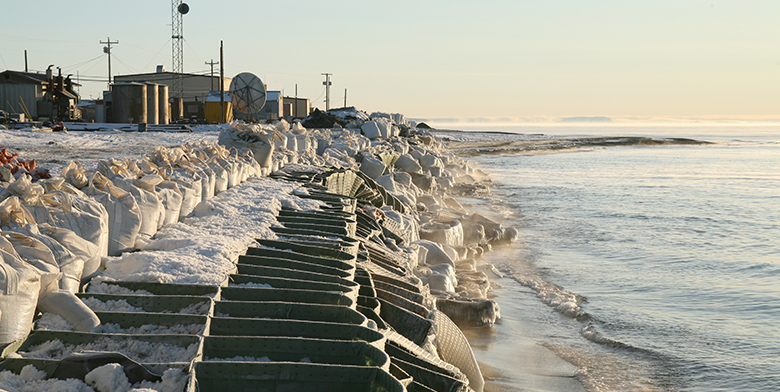For residents of Kivalina in northwest Alaska, constructing a new water and wastewater system for the entire village is not an option. Due to effects of climate change, Kivalina intends to relocate to escape the ongoing vulnerability to flooding and erosion. In the meantime, there are deficiencies in sanitation that must be addressed in order to support the health needs of community residents.
ANTHC and the Cold Climate Housing Research Center are working with the community of Kivalina on a demonstration project for non-piped, in-home sanitation systems. The project retrofitted nine homes with low-cost sanitation improvements that can be moved with the community to a new location. Over the next year, the project will monitor homeowner acceptance, health benefits and feasibility for other northern coastal communities.
With this project, all water treatment and waste disposal happens in the home. Water is collected from rainwater catchment, melted ice or water hauled from the river and stored in a treatment tank. It is distributed by gravity to low-flow sink and toilet fixtures. Flushed wastewater is separated into liquid and solid components where the liquid is disposed of into a seepage pit and dried solids are disposed of in the landfill.
Modular construction of the system facilitates quick installation and reduces construction costs; the system is mobile and can be moved with the home if and when needed. Most importantly, Kivalina residents will have access to water that makes our communities healthier and more sustainable.
Portable Alternative Sanitation System: Final report | Kivalina, Alaska [PDF]

